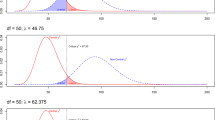Abstract
This paper investigates the extent of nonstationarity of beta across the firm size and the beta magnitude by suggesting the sequential parameter stationarity model and estimating change-points of betas. The high-beta firm has shorter stationary interval, which means that its beta changes more frequently than do the low-beta firm's. The firm size, however, does not have a monotonic relation with the length of stationary interval. The small and large firms have relatively shorter stationary interval than do the mid-sized firms. The average length of stationary interval is estimated about five years (exactly 54.19 months). This fact could support the currently widely-used arbitrary 5-year assumption of beta stationarity. The fluctuation of the large firm's beta is more severe than the small firm's, and the high- and low-beta firms have the relatively greater fluctuating betas than do the mid-beta firms. The frequency of detected change-points is found to be positively related to market returns. When the market return is high, the systematic risk changes more frequently, and vice versa.
Similar content being viewed by others
References
Alexander, G.J. and N.L. Chervany, “On the Estimation and Stability of Beta.”Journal of Financial and Quantitative Analysis 15, 123–137, (1980).
Altman, E.I., B. Jacquillat, and M. Levasseur, “Comparative Analysis of Risk Measures: France and the United States.”Journal of Finance 29, 1495–1571, (1974).
Baesel, J.B., “On the Assessment of Risk: Some Further Considerations.”Journal of Finance 29, 1491–4, (1974).
Blume, M.E., “On the Assessement of Risk.”Journal of Finance 26, 1–10, (1971).
Blume, M.E., “Betas and Their Regression Tendencies.”Journal of Finance 30, 785–95, (1975).
Bos, T. and Newbold, “An Empirical Investigation of the Possibility of Stochastic Systematic Risk in the Market Model.”Journal of Business 57, 35–41, (1984).
Brown, P., A.W. Kleidon, and T. Marsh, “New Evidence on the Nature of Size-related Anomalies in Stock Prices.”Journal of Financial Economics 12, 33–56, (1983).
Chen, S.N., “Beta Nonstationarity, Portfolio Residual Risk and Diversification.”Journal of Financial and Quantitative Analysis 16, 95–111, (1981).
Fabozzi, F.J. and J.C. Francis, “Beta as a Random Coefficient.”Journal of Financial Quantitative Analysis 13, 101–116, (1978).
Fabozzi, F.J. and J.C. Francis, “The Effects of Changing Macroeconomic Conditions on the Parameters of the Single Index Market Model.”Journal of Financial and Quantitative Analysis 14, 351–360, (1979a).
Fabozzi, F.J. and J.C. Francis, “Mutual Fund Risk Statistics for Bull and Bear Markets: An Empirical Examination.”Journal of Finance 34, 1243–1250, (1979b).
Fama, E. and J.D. MacBeth, “Risk, Return and Equilibrium: Empirical Tests.”Journal of Political Economy 71, 607–636, (1973).
Gonedes, N.J., “Evidence on the Information Content of Accounting Numbers: Accounting-based and Market-based Estimates of Systematic Risk.”Journal of Financial and Quantitative Analysis 9, 407–43, (1973).
Ibbotson, R.C.,Stocks, Bonds, Bills, and Inflation: 1990 Yearbook, Chicago, IL: R.G. Ibbotson Associates, (1990).
Kim, D., “A Bayesian Significance Test on the Stationarity of Regression Parameters.”Biometrika 78, 667–675, (1991).
Kim, D. and S.J. Kon, “Sequential Parameter Nonstationarity in Stock Market Returns.” Working paper, The Graduate School of Business Administration, University of Michigan, (1992).
Levy, R.A., “Stationarity of Beta Coefficients.”Financial Analysts Journal 27, 52–62, (1971).
Ohlson, J. and B. Rosenberg, “Systematic Risk of the CRSP Equal-weighted Common Stock Index: A History Estimated by Stochastic Parameter Regression.”Journal of Business 55, 121–145, (1982).
Roenfelt, R.L., G.L. Griepentrog and C.C. Pflaum, “Further Evidence on the Stationarity of Beta Coefficients.”Journal of Financial and Quantitative Analysis 13, 117–121, (1978).
Roll, R., “A Possible Explanation of the Small Firm Effect.”Journal of Finance 36, 879–888, (1981).
Sharpe, W.F., “Capital Asset Prices: A Theory of Market Equilibrium under Conditions of Risk.”Journal of Finance 19, 425–442, (1964).
Sunder, S., “Stationarity of Market Risk: Random Coefficients Test for Individual Stocks.”Journal of Finance 35, 883–896, (1980).
Treynor, J.L. and K.K. Mazuy, “Can Mutual Funds Outguess the Market?”Harvard Business Review (July–August 1966).
Author information
Authors and Affiliations
Rights and permissions
About this article
Cite this article
Kim, D. The extent of nonstationarity of beta. Rev Quant Finan Acc 3, 241–254 (1993). https://doi.org/10.1007/BF02407008
Issue Date:
DOI: https://doi.org/10.1007/BF02407008




